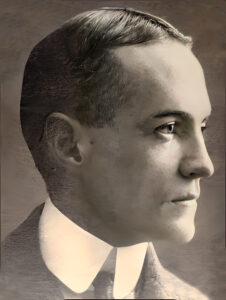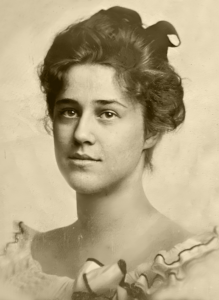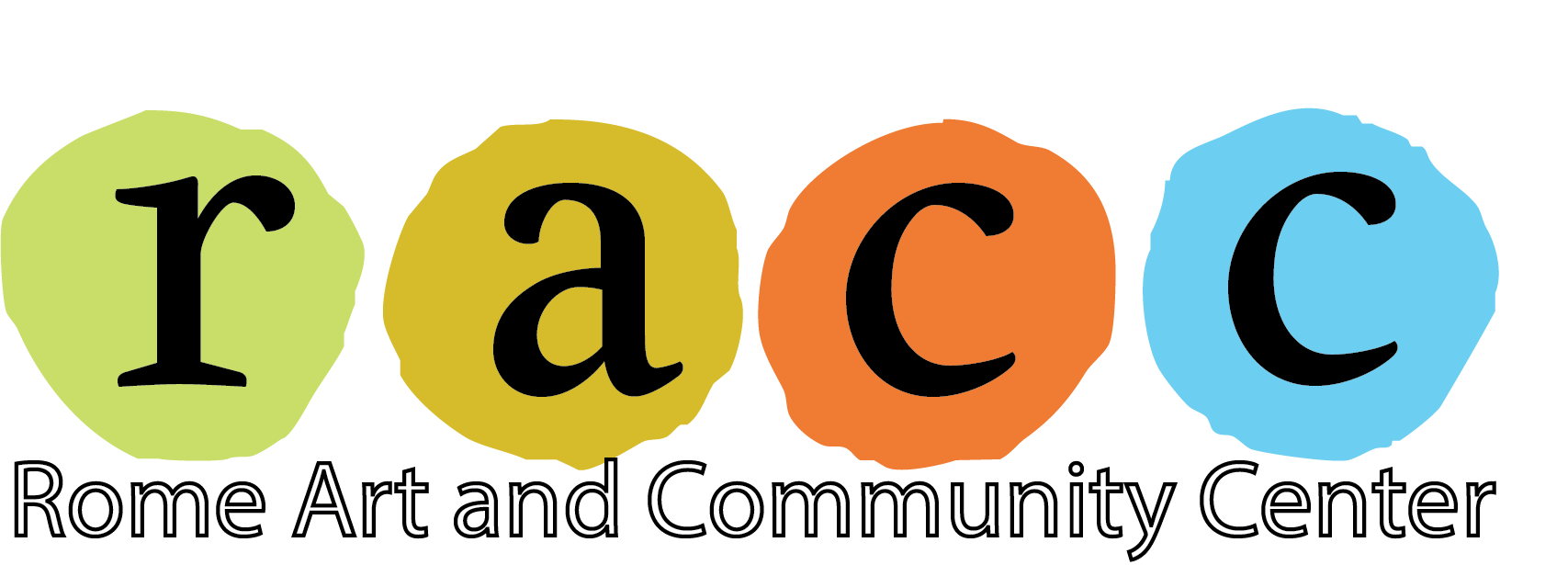The Carpenters
Rome Art And Community Center, prior to its purchase by the City of Rome, was known as the Carpenter House. The house, an excellent example of English Tudor architecture, together with its extensive grounds, is now open to all visitors. Newcomers to our community often express an interest in knowing something more about the house. You can download the house’s history here.

 Arthur F. Carpenter, one of Rome’s most successful industrialists, owner of Rome Metallic Bedsted Co., and his wife Grace, built the house in 1923.
Arthur F. Carpenter, one of Rome’s most successful industrialists, owner of Rome Metallic Bedsted Co., and his wife Grace, built the house in 1923.
A debt of gratitude is owed to Mrs. Carpenter for so much of the beauty we now see . Her attention to detail and directive to the building’s architect was classic! She knew exactly what she wanted, and she summarized it all with one sentence: “I want a house that Jane Austen would have wanted to live in.”
Architectural Marvel
The main building achieves its singularity through many carefully designed architectural innovations. Every single brick in its exterior was a “reject”. Their imperfection, when massed, provides the building with its color and texture. The carefully placed chimneys were purposely made crooked. The steeply pitched roof with its thick, colored slate, weighing some 70 tons, and the leaded diamond-paned windows are in style of English manor houses of the Elizabethan Era. The relief fireplaces, ceilings, and carvings over the oak stairs are richly ornamented with symbols that represent English crests and coats of arms. The Carpenter’s favorite symbol was the Greyhound, which can be spotted secretly throughout the home in special details.
Art & Furnishings
When the house was finished in 1923, Mr. & Mrs. Carpenter hired the world famous art collector, Joseph Duveen, to appropriately furnish its interior. The local community was witness that summer to a parade of trucks bringing priceless court cupboards, 17th Century chairs, wall hangings, floor coverings and other antique furnishings and art treasures from New York. Mr. Duveen was given license to try each piece for its overall appearance and fitness; he returned some pieces to be replaced by others until the total suited the decorator’s taste.
The final furnishings, (a few pieces of which still remain), the walls and plank flooring were all coordinated to avoid a sense of newness. Fine paintings included a hall painting from the Canaletto School, which still hangs in the building. The oak-paneled library contained an outstanding book collection displayed on shelves which covered two walls from floor to ceiling. An antique gate-leg table, circa 1650, presently in the dining room, was at the center of the room. This library room was the favorite room for entertaining family and friends over cocktails and demitasse.
Community Significance
Surrounding the beautiful Carpenter home were well-planned gardens and lawns. The lawn immediately north of the house was maintained as a putting green since the Carpenters were avid golfers. The extreme north side of the property, when the Carpenters were resident, had an enclosed area that included a lily pond surrounded by jack-in-the-pulpits, lady’s slippers, ivy and rare botanical specimens. A number of dogwood trees planted at that time continue to flourish, even though Rome is at the most northern latitude that these trees can grow. The property’s enormous east lawn has huge bearded firs and at the northeast corner is a rare magnolia. Missing now due to blight are the stately vase-shaped elms that shaded the area where neighborhood boys played football in uniforms given to them by Mrs. Carpenter. A favorite birthday celebration for Mrs. Carpenter was a party for these same children. Mrs. Carpenter was herself an amateur artist and had studied in New York City. Her studio on the third floor was replete with its “north window”. We remember particularly her interest in painting circus clowns and an array of easels, oils and partially completed works, most of which included people. She produced a few pieces of sculpture and wrote two small books, “Friends of the Road” and “The Besieging Spirit.” After the deaths of Arthur and Grace Carpenter, the City of Rome bought the property in 1966 for the purpose of housing the nonprofit organization, Rome Art And Community Center.
